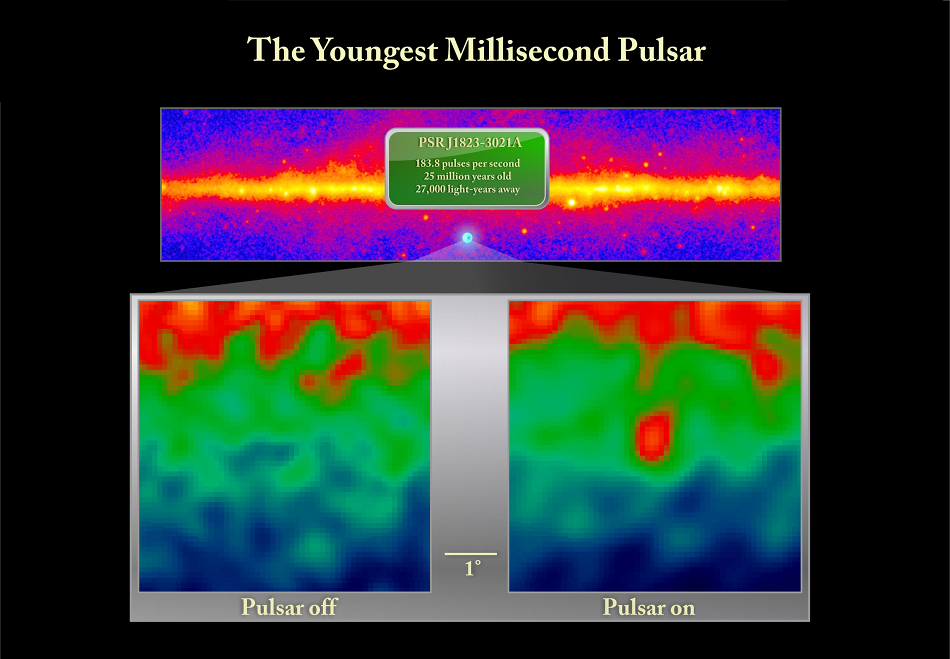
 Credit: NASA/DOE/Fermi LAT Collaboration
Credit: NASA/DOE/Fermi LAT Collaboration
Headspinning
Pulsars are rapidly rotating neutron stars that go flash in the night. These incredibly dense objects (one teaspoon of a neutron star would weigh more than Mount Everest) are the dead, collapsed cores of stars which started out with more than 10 times the sun's mass. They produce a variety of radiation (radio waves, visible light, X-rays and even gamma rays) near their magnetic poles; as the pulsar rotates, this emission swings through space like a lighthouse beam, and so can serve as a navigation aid for distant spacefarers. Pulsars can rotate at speeds that would tear a less-dense object apart. The fastest pulsars are the millisecond variety, which rotate more than 100 times per second. Millisecond pulsars rotate so rapidly that it's impossible to believe that they are born spinning so fast. Astronomers postulate that these stars have had their rotation rates increased by the accretion of matter from a companion star. But a newly discovered millisecond pulsar, which goes by the name of PSR J1823-3021A, might cause astronomers to revisit this theory. This pulsar lies within a globular cluster called NGC 6624, a group of ancient stars orbiting around the outskirts of our Galaxy. Pulsations from this source were detected in radio observations, and now in gamma-rays by the Fermi Gamma-ray Space Telescope. Fermi shows that almost all the Gamma-ray emission from NGC 6624 comes from this single pulsar, an object no larger than New York city. Although NGC 6624 is about 10 billion years old, the Fermi observations show that PSR J1823-3021A is only about 25 million years old. How such a young, rapidly-spinning object could have formed in such an old cluster is a puzzle to astronomers. How many other puzzles are out there?
Join the search and find out for yourself.
Published: November 7, 2011
<
HEA Dictionary ● Archive
● Search HEAPOW
● Other Languages
● HEAPOW on Facebook
● Download all Images
● Education ● HEAD
>

Each week the HEASARC
brings you new, exciting and beautiful images from X-ray and Gamma ray
astronomy. Check back each week and be sure to check out the HEAPOW archive!
Page Author: Dr. Michael F. Corcoran
Last modified Monday, 26-Feb-2024 17:23:13 EST


